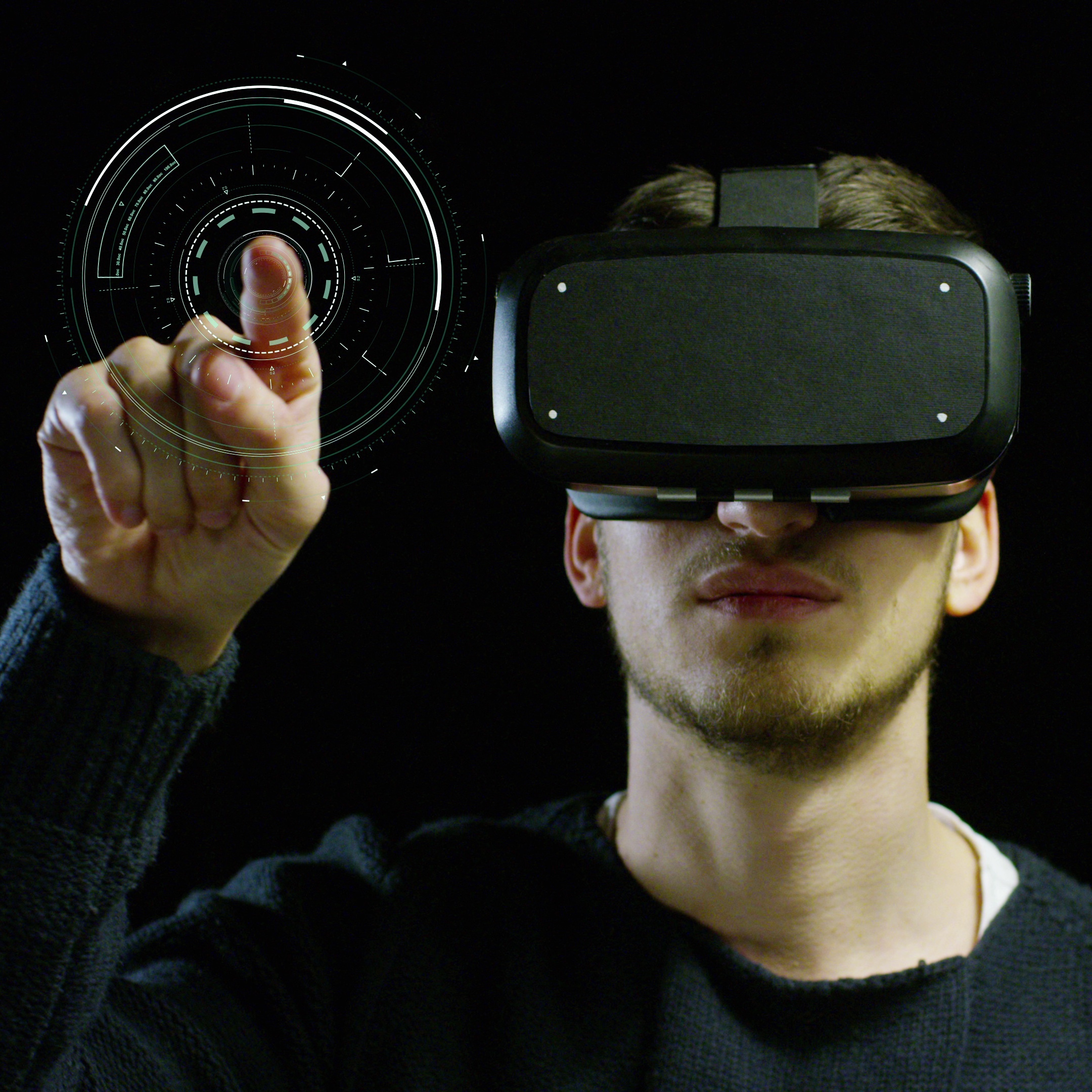Moving Beyond Innovation: The Critical Role of Experience Design in Driving Success
Imagine you’re attending a concert by your favorite band. The stage is set, the lights dim, and the crowd buzzes with anticipation. As the first notes reverberate through the air, you’re transported into a world of music, emotion, and connection. It’s an experience that leaves an indelible mark on your memory—a moment that embodies the power of experience design.
In today’s crowded marketplace, more than simply innovating is needed to capture the hearts and minds of customers. Your enterprise must go beyond providing products or services to truly stand out. You must create meaningful and unforgettable experiences that captivate and delight your customers.
The Rise of Experience Design
Customers no longer solely evaluate a brand based on its offerings. They crave experiences that leave a lasting impact. You can cultivate lasting relationships with your target audience by orchestrating experiences beyond functional utility and tapping into emotions.
The Experience-based Economy
Customer priorities have shifted from the service economy to the experience-based economy. While the focus was primarily on the quality and efficiency of services provided in the past, today’s customers emphasize the emotions and overall satisfaction derived from an experience.
To meet these new expectations, brands must design experiences that are intuitive, natural, and familiar to users. From the website to the mobile app to the in-store experience, every touchpoint should be designed to consistently delight customers and create a sense of continuity throughout their brand experience.
Understanding Experience Design: More Than Visual Design or UX
Defining Experience Design: Putting People at the Center
Experience Design is a multidisciplinary approach that places people at the heart of the design process. It goes beyond visual design and user experience (UX) to encompass the entire user journey, considering users’ needs, emotions, and contexts.
Experience Designers aim to create seamless and meaningful interactions that resonate with users more deeply. Experience Design is about empathy—putting yourself in your customer’s shoes and understanding their perspectives, motivations, and needs.
Moving Beyond Features: Designing Emotionally Impactful Experiences
To design emotionally impactful experiences, experience designers carefully craft every touchpoint to balance ease and delight. They strive to remove friction and make interactions intuitive, allowing customers to achieve their goals effortlessly.
Experience Design is about more than just checking off a list of features. It’s about creating experiences that hit you right in the feels. It’s about injecting elements of delight, innovation, and personalization, so a positive memory lingers long after the interaction.
Take Disney, for instance. From the moment you step into their theme parks, you’re transported into a magical world where every detail is designed to evoke joy and wonder. They understand crafting experiences that touch their visitors’ hearts fosters lifelong loyalty and turns customers into brand advocates.
You’re likelier to become a loyal customer when you have emotionally impactful experiences like these. You can’t help but rave about it to your friends and family, spreading the word about this incredible brand that just gets you.
Experience Design as a Business Strategy: Lessons from Disruptive Brands
Let’s look at some trailblazing brands that have embraced Experience Design as a core business strategy.
Take Airbnb, for example. They didn’t just create a platform for booking accommodations; they revolutionized how people travel by designing an immersive and personalized experience. From browsing unique listings to interacting with hosts, every step is carefully crafted to make users feel like they’re part of a global community.
Another standout brand is Warby Parker, an eyewear company that disrupted the industry with its direct-to-consumer model. They didn’t just sell glasses; they created an experience that made choosing and purchasing eyewear enjoyable and hassle-free.
The Essence of Brand Experiences: Shaping Customer Perception
Evoking Emotions and Building Connections through Experience Design
You want to create a connection with your customers that goes beyond the transactional.
Brands that understand humans are emotional beings tap into those emotions to create transformative experiences. Designing goes beyond functionality and aesthetics, focusing on the joy, delight, and satisfaction of using a product or service.
The Influence of Experience on Brand Loyalty and Advocacy
In the modern competitive business landscape, customer experience is a key battleground. It’s not just a nice-to-have; it’s a strategic imperative. Studies show that 89% of businesses now compete primarily based on customer experience. Customers have come to expect exceptional experiences and are willing to seek out brands that can deliver.
Plus, customer experience plays a significant role in purchase decisions. A whopping 73% of consumers consider the experience they’ll have with a brand when deciding whether to make a purchase. It’s clear that investing in experience design is no longer optional—it’s essential for staying relevant and gaining a competitive edge.
Differentiating Brands through Memorable and Unique Experiences
Certain brands have become synonymous with exceptional experiences. Think of Apple, known for its sleek and intuitive products that seamlessly integrate into users’ lives. With their immersive retail stores and personalized training apps, Nike elevates the athletic experience. Starbucks has mastered creating a cozy and welcoming environment where every sip of coffee becomes an experience.
These brands understand that to stand out in a crowded market, they must differentiate themselves through memorable and unique experiences. They go beyond just selling products or services; they create an entire ecosystem of experiences that align with their brand identity and resonate with their target audience. By doing so, they carve out a special place in customers’ hearts and minds, leading to long-lasting relationships and enduring loyalty.
The Five Key Components of Experience Design
1. Human-centered Thinking: Anticipating and Meeting Customer Needs
At the heart of Experience Design is the unwavering focus on people. It all starts with understanding your customers’ needs, desires, and pain points. By putting yourself in their shoes, you can anticipate their expectations and design experiences that go above and beyond.
2. Coordinating Touchpoints: Consistency in Brand Experience
In today’s interconnected world, customers interact with brands across multiple touchpoints. Whether browsing a website, using a mobile app, or stepping into a physical store, each touchpoint contributes to the overall brand experience. To create a seamless and memorable journey, it’s crucial to coordinate these touchpoints and ensure consistency in messaging, design, and interactions.
3. Cultivating a Customer-centric Organizational Culture
To truly excel in Experience Design requires a shift in organizational culture. It’s not enough for a few individuals or departments to champion the cause—it must be embraced throughout the organization. Cultivating a customer-centric culture means instilling a mindset where every team member understands the value of experience design and actively contributes to its success.
Breaking down silos and promoting collaboration across departments is vital. When marketing, product development, customer service, and other teams work together, they can create a holistic approach that places the customer at the centre.
4. The Role of Technology in Enabling Seamless Experiences
Technology empowers companies to deliver fast, efficient, and adaptable experiences that meet evolving customer expectations, from sophisticated platforms to cutting-edge tools.
Take, for example, Uber. Through a mobile app, users can effortlessly request a ride, track their driver’s location, and complete payment—all in minutes. The underlying technology enables the seamless coordination of drivers and passengers, providing a frictionless experience.
5. Leveraging Data: Testing, Iterating, and Personalizing Experiences
Data is a goldmine when it comes to Experience Design. By leveraging analytics, companies can gather information on user behavior, preferences, and pain points. These insights guide continuous improvement efforts and enable companies to optimize their experience design strategies.
Imagine an e-commerce platform that tracks user browsing behavior and purchase history. With this data, they can understand individual preferences and tailor product recommendations. This personalized touch enhances the shopping experience, making customers feel understood and valued.
Moreover, data allows companies to test and iterate on their experience design. By conducting user testing, A/B testing, and gathering feedback, they can identify areas for improvement and make data-driven decisions. This iterative approach ensures that experiences are continuously refined to better meet customer needs and expectations.
Applying Experience Design Across Brand Touchpoints
Marketing and Advertising: Crafting Compelling Narratives and Immersive Campaigns
It’s about more than just selling a product or service—creating an emotional connection with your target audience.
Think about iconic brands like Coca-Cola and their holiday campaigns. Through heartwarming stories and captivating visuals, they evoke feelings of joy, togetherness, and nostalgia. These brands create memorable campaigns that leave a lasting impression by designing experiences that tap into their audience’s core emotions and values.
Retail and E-commerce: Seamlessly Integrating Online and Offline Experiences
The line between online and offline experiences needs to be clarified. Customers expect a seamless transition between physical stores and online platforms.
Fashion retailers like Zara or H&M with brick-and-mortar stores and an e-commerce website. By integrating their online and offline experiences, they can offer features like “buy online, pick up in-store,” or “virtual try-on” options. These innovations enhance convenience and make the shopping experience more enjoyable for customers, regardless of how they engage with the brand.
Customer Service: Fostering Positive Interactions and Resolving Issues with Empathy
It’s about going beyond resolving issues—it’s about fostering positive interactions and building strong customer relationships.
Customer service teams should understand that each customer is unique, and tailoring the support experience to their needs can make all the difference. By incorporating technology to streamline processes, such as chatbots or customer service portals, you can ensure efficient and effective resolution of issues while maintaining a human touch.
Product Development: Incorporating User Feedback and Iterative Design Processes
By incorporating user feedback and utilizing iterative design processes, you can create products that meet customer needs and exceed their expectations.
Successful companies actively seek user input and gather insights into what customers love, what frustrates them, and what features or improvements they desire. This user-centric approach allows companies to iteratively refine their products, ensuring that each iteration brings them closer to delivering a truly exceptional experience.
Conclusion
Today, the art of Experience Design sets visionary companies apart, elevating them to the pinnacle of success.
Experience Design has become a game-changer in the competitive business landscape, allowing brands to create remarkable and unforgettable experiences that resonate with customers. As we transition into an increasingly digital world, the demand for immersive and interactive experiences is higher.
We at magineu specialize in helping brands forge deep emotional connections with customers, creating a bond that transcends transactional relationships.



